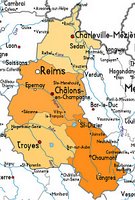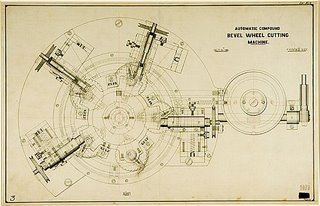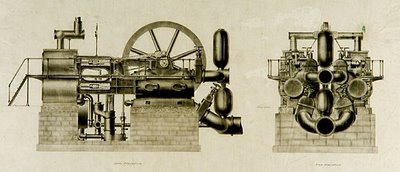The original cartographic maps were crude endeavours carved in wood (the end of the 15th century) that were limited in the detail they could sustain and the length of time they lasted. With the development of metal engraving during the 16th and 17th centuries, better quality charts were prepared, primarily for civil and military administrators. In the 19th century, lithography allowed for low cost reproductions and maps became available to a wider section of the population beyond the elite. The pressures of industrialization and competition for land resources were a secondary reason maps became more easily available.
Under the Ancien Régime (old feudal/royal order) engineering corps constructed fortifications for city protection and to house new armaments. Maps were drawn for planning upkeep, for use during the actual construction on the ground and copies were also held by the King in Paris. Further copies were often made for warfare chronicles and for private collections.
 Carte des environs de Troyes pour servir à désigner la situation des lieux où les
Carte des environs de Troyes pour servir à désigner la situation des lieux où les chanoines réguliers de la Trinité ont leurs héritages et propriétés - 18th century.
(2 more rural land use maps below)
 Carte générale des chemins de fer de la Champagne
Carte générale des chemins de fer de la Champagne et de l'Aisne publiée par Matot-Braine.
Lithograph - 1859.
 Tableau d'assemblage du plan cadastral parcellaire de Germainvilliers.
Tableau d'assemblage du plan cadastral parcellaire de Germainvilliers.Probably late 18th-early 19th century.
17th century feudal map on parchment - said to have been a sign of distinction in general cartography as most (non-marine) maps were printed on paper by that stage.
 Canal de la Haute-Seine - Ville de Troyes, projet d'alignement
Canal de la Haute-Seine - Ville de Troyes, projet d'alignement approuvé en 1806 Saguery, fait par l'ingénieur en chef du département
de l'Aube [plan des canaux et du port de flottage de Troyes].
 The Champagne-Ardenne region of France is directly east of Paris. All the material above comes from Terres de Champagne-Ardenne: Cinq siècles de cartographie, a Troyes library website posted in conjunction with an exhibition they are having between April and June this year.
The Champagne-Ardenne region of France is directly east of Paris. All the material above comes from Terres de Champagne-Ardenne: Cinq siècles de cartographie, a Troyes library website posted in conjunction with an exhibition they are having between April and June this year.All the words here are mine and are a product of my own translations, deductions, reasoning, web reading and some web translations. So I recommend you sprinkle on some salt prior to digestion. This is an excellent website and I've only provided a few mouthfuls from an otherwise sumptuous meal for those of the cartohistoriological persuasion. More power to francophonic visitors.
Apart from this final map (which comes from here) I've uploaded full size files so click on the images above for a larger view. It's a mostly flash website using Zoomfiy making extraction of images/image details a bit difficult. Some of the Zoomify boxes and library stamps have been removed from the background.



















































































